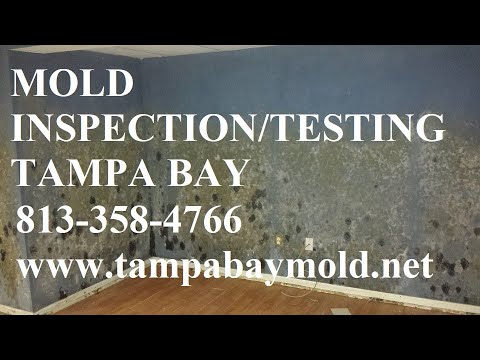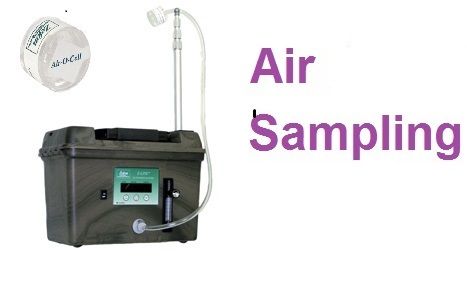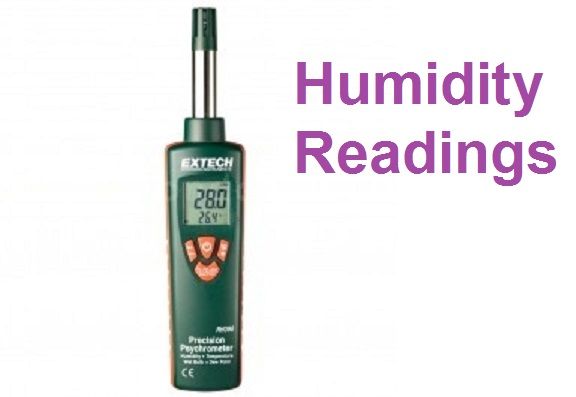South Tampa Mold Inspection & Testing Services: Affordable & Comprehensive
Key Takeaways
-
South Tampa’s humid climate makes regular mold inspections a necessity for healthy living environments.
-
Identifying mold early can prevent health issues and protect your home’s value.
-
Professional mold inspections use specialized tools and expertise to detect hidden mold.
-
A mold-free home improves indoor air quality and can increase property value.
-
Booking a professional mold inspection is a simple step towards ensuring a healthier home.
Why South Tampa’s Climate Demands Regular Mold Inspections
Living in South Tampa, we’re no strangers to the heat and humidity that define our subtropical climate. But there’s a hidden intruder that thrives in this environment: mold. And trust me, it’s not just an unsightly nuisance; it can wreak havoc on both your health and your home.
The Perfect Breeding Ground: Humidity and Mold Growth
Why is mold such a big deal in South Tampa? It all comes down to the humidity. Mold loves moisture, and our area provides it in spades. This means that our homes and businesses are at a higher risk for mold growth, which can start in as little as 24 to 48 hours after exposure to damp conditions.
Local Weather and Its Impact on Mold Proliferation
But it’s not just the humidity that’s the problem. After a heavy rainstorm or during our hurricane season, the risk of water intrusion increases. This can lead to mold in places you might not think to check, like behind walls or under floors. That’s why regular inspections are so crucial—they help catch mold before it becomes a major problem.
Spotting The Enemy: Identifying Mold in Your Home
-
Check for visible mold growth, which can appear as spots or discoloration on various surfaces.
-
Be aware of musty odors, a telltale sign of mold, especially in basements, bathrooms, and kitchens.
-
Look out for water damage, like staining or peeling paint, which often accompanies mold growth.
Now, you might think you’d know if you had mold in your house, but it’s not always that simple. Mold can be a master of disguise, hiding in places you wouldn’t expect.

Visual Markers: What Mold Looks Like
Most of us can spot the obvious signs of mold—it’s that unsightly black, green, or even white growth that appears on walls, ceilings, or anywhere there’s been moisture. But mold isn’t always visible. Sometimes, it’s lurking inside your walls, in your attic, or under your carpets, waiting to be discovered.
Olfactory Clues: The Smell of a Mold Infestation
Even if you can’t see it, you might smell it. Mold has a musty, earthy scent that’s hard to miss once you know what you’re sniffing for. If you catch a whiff of something off in your home, it’s time to play detective and find the source.
Health at Home: Risks of Ignoring Mold
So why should you care about a little mold? Because it’s not just about looks. Mold can have serious health implications, especially for those with allergies or asthma. Even if you’re not allergic, mold can irritate your eyes, skin, nose, throat, and lungs. Learn more about the risks and proper mold inspection and testing in South Tampa.
Respiratory Issues and Allergic Reactions
Ignoring mold isn’t worth the risk. Prolonged exposure can lead to chronic respiratory issues and severe allergic reactions. For the sake of your health, and the health of your loved ones, keeping mold at bay is essential.
The Long-Term Consequences of Mold Exposure
Besides the immediate discomfort, long-term exposure to mold can lead to more severe health conditions. It’s not just a runny nose or a cough; mold exposure has been linked to conditions like asthma development in children and immune system suppression. Taking action against mold isn’t an overreaction—it’s protecting your future health.
The Expert’s Touch: Professional Mold Inspection Process
When it comes to mold, you don’t want to leave anything to chance. That’s why enlisting the help of a professional mold inspector is a game-changer. They have the know-how and the tools to spot mold you might miss.
How a Professional Conducts Mold Inspections
During an inspection, professionals will do a thorough walkthrough of your home, paying special attention to areas prone to moisture. They’ll check for visible signs of mold and also use moisture meters to detect unseen dampness that could harbor mold growth.
Most importantly, a professional inspector won’t just look at the surface. They’ll dive deep into potential problem areas, using their expertise to assess the risk and extent of any mold issues.
The Tools and Technologies Used in Mold Detection
Professionals use an arsenal of tools to detect mold. This includes infrared cameras to find hidden moisture, air sampling to test for mold spores, and surface testing to confirm the presence of mold. With these technologies, no mold can hide, ensuring your home is thoroughly checked.
Clearing The Air: The Benefits of a Mold-Free Home
A home without mold isn’t just a cleaner home; it’s a healthier one. By eliminating mold, you’re removing potential toxins from your living space and making the air safer to breathe for you and your family.

Improving Indoor Air Quality
Did you know that indoor air can be up to five times more polluted than outdoor air? And mold plays a big part in that statistic. By tackling mold, you’re taking a big step toward cleaner air and a better quality of life.
For example, after a family in South Tampa had their home treated for mold, they noticed an immediate improvement in their symptoms of allergies and asthma. It’s a clear sign of how a mold-free environment can transform your health.
Boosting Property Value by Eliminating Mold
Besides health benefits, a mold inspection can be a smart financial move. Homes free of mold issues are more attractive to buyers, ensuring you get the best value if you ever decide to sell. It’s an investment in your property that pays off in more ways than one.
Action Plan: Steps to Take Post Mold Inspection
Once you’ve had a professional inspection and you know the status of mold in your home, what’s next? Taking the right steps after an inspection is crucial to keeping your home safe and healthy. For a detailed approach, consider following this comprehensive guide on mold remediation in Tampa.
Interpreting Your Mold Inspection Report
After an inspection, you’ll receive a detailed report on the findings. This document is key—it tells you not only where mold was found but also the type and concentration. Understanding this report is the first step in addressing any mold issues.
An example report might note “Cladosporium spores found in the HVAC system at high concentrations,” indicating a need for thorough cleaning and possible repair of the system to prevent future growth.
Creating a Remediation Plan
With your inspection report in hand, the next step is to create a remediation plan. This might involve hiring a professional mold removal service or, for minor issues, tackling the problem yourself. Either way, it’s about taking action to create a safe, mold-free environment.
Remember, the goal is not just to remove the mold but to address the underlying issues that allowed it to grow in the first place. This might mean improving ventilation, fixing leaks, or controlling humidity levels in your home.
Scheduling Your Appointment: An Easy Step Toward a Healthier Home
-
Identify potential mold issues with a thorough inspection.
-
Get expert recommendations for mold remediation.
-
Protect your family’s health by addressing mold risks promptly.
-
Enhance your home’s air quality and overall well-being.
-
Preserve the value and integrity of your property.
Booking a mold inspection is straightforward and the best proactive measure you can take for your home’s health. It’s a simple step, but it has a profound impact on the well-being of your living space and the health of those who live in it. By scheduling an appointment, you’re taking charge of your home’s environment and making a commitment to a healthier, safer lifestyle.
Don’t wait for visible signs of mold or a musty smell to alert you to a problem. By then, it could be too late for easy fixes. Regular inspections can catch issues early, saving you time and money in the long run. Plus, the peace of mind you’ll gain, knowing that your home is mold-free, is invaluable.
Take the first step towards a mold-free home today. It’s easy to do and an essential part of home maintenance that you shouldn’t overlook. Your family, and your future self, will thank you.

Frequently Asked Questions
Got questions about mold inspections? You’re not alone. Here are some of the most common queries homeowners have about the process, the risks, and the solutions when it comes to dealing with mold.
How often should I have a mold inspection in South Tampa?
Given our climate, it’s wise to have a mold inspection at least once a year. However, if you’ve experienced any water damage or notice any signs of mold growth, you should schedule an inspection immediately.
Consistent check-ups can catch potential mold growth before it becomes a serious problem, especially in areas that are prone to high humidity and moisture. Think of it as a regular health check-up, but for your home. Learn more about South Tampa mold inspection and testing services.
Regular inspections are particularly crucial if you or someone in your household suffers from respiratory issues or allergies, as mold can exacerbate these conditions.
What are the common areas in a house where mold is found?
For instance, a family noticed a persistent musty smell in their basement but couldn’t find any visible signs of mold. It wasn’t until a professional mold inspection was conducted that they discovered mold growth behind the drywall, caused by a slow plumbing leak.
Mold can lurk in many places, but there are some common hotspots you should know about:
-
Bathrooms and kitchens, where steam and water use are frequent.
-
Basements and crawlspaces that may have poor ventilation and moisture issues.
-
Around windows where condensation can build up.
-
In attics with inadequate insulation or ventilation.
-
Anywhere there has been water damage, such as from leaks or flooding.
By knowing where to look, you can be vigilant and catch mold before it spreads.
Can mold in my home make me sick?
Absolutely, mold can have a variety of health effects. While some people may not experience immediate symptoms, others can suffer from:
-
Nasal stuffiness
-
Throat irritation
-
Coughing or wheezing
-
Eye irritation
-
Skin irritation
Long-term exposure can lead to more serious health issues, especially for those with pre-existing respiratory conditions. If you suspect mold in your home, it’s crucial to address it for the sake of your health.
What does a professional mold inspector look for during an inspection?
A professional mold inspector will conduct a comprehensive assessment of your home. They look for visible signs of mold, sources of moisture, and areas at risk for mold growth. They use tools like moisture meters and thermal imaging cameras to detect hidden problems.
Moreover, they’ll take air and surface samples to test for mold spores, which can indicate the presence of mold even if it’s not visible. The goal is to find all potential mold issues, visible or not, and provide you with a plan to address them.
How long does the mold inspection and testing process take?
The duration of a mold inspection can vary based on the size of your home and the extent of the suspected mold issue. On average, an inspection can take anywhere from two to five hours.
After the inspection, it can take a few days to receive the full lab results from any samples taken. Once you have the results, you can move forward with any necessary remediation steps to ensure your home is safe and healthy.
Remember, mold isn’t just a cosmetic issue—it’s a health concern. By staying informed and proactive, you can protect your home and your family from the risks associated with mold. And when you’re ready to take action, booking an appointment for a mold inspection is just a click away.
